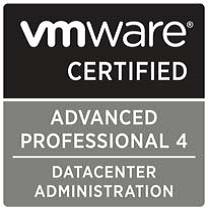There are a lot of companies that are using virtualization today and in most of those environments will have Microsoft Windows Server products. If your in this boat I hope that you have changed from the old per server licensing model you may have used back in the day. If not, your probably missing out on some cost savings. There are many Microsoft licensing benefits which can be realized when using virtualization from their server and desktop OS’es to their management software. I will only focus on the server licensing.
Here is how Microsoft licensing for Windows Server breaks down.
| Microsoft License Tier |
Operating System Installed in VM |
Licenses Required |
| Windows Server Enterprise with SA (4x vm guest installs per license) |
MS Windows Server Standard MS Windows Server Enterprise (2000, 2003, & 2008) including R2 |
VM_Count/4 = Total licenses needed |
| Windows Server Datacenter with SA (per processor of esx host) |
MS Windows Server Standard MS Windows Server Enterprise MS Windows Server Datacenter (2000, 2003, & 2008) including R2 |
Server_Processor_Count x Total_Servers = Total licenses needed |
Let take an example environment and do some numbers. This is a pretty large environment but it’s probably a common one today. Either way you should do your own cost analysis using real costs and quantities.
| vCenter Count |
Host (2 Processors) |
VM Guests |
| 1 | 38 | 432 |
This is comparison of MS Server licensing comparing the per server module used with physical, and the different options using virtualization model. The pricing in this chart is for licenses with Software Assurance (SA) included for 1 year. Note: The per license cost used in this example is using average costs based on what I have seen in the past. They are NOT costs you will see since this varies all the time.
The pricing in this chart is for licenses with Software Assurance (SA) included for 1 year.
| License Model | Unit Cost | VM Guests | Total ESX Hosts Processors |
Licenses Needed |
Total Cost |
| Per VM (Standard with SA) |
$588.65 | 432 | N/A | 432 | $254,296.80 |
| Virtualized (Enterprise with SA) | $1,912.84 | 432 | N/A | 108 | $206,586.72 |
| Virtualized (Datacenter with SA) | $1,951.31 | N/A | 76 | 76 | $148,299.56 |
This chart shows the difference in pricing between the different licensing models.
| License Model | Total Cost |
Savings versus Standard |
Savings versus Enterprise |
| #1- Per VM (Standard) | $254,296.80 | None | None |
| #2- Virtualized (Enterprise) | $206,586.72 | -$47,710.08 | None |
| #3- Virtualized (Datacenter) | $148,299.56 | -$105,997.24 | -$58,287.16 |
This chart shows the Software Assurance renewal pricing when renewal comes around each year for this example environment.
| License Model | Software Assurance (1yr) |
Savings versus Standard |
Savings versus Enterprise |
| #1- Per VM (Standard) | $61,776.00 | None | None |
| #2- Virtualized (Enterprise) | $41,109.12 | -$20,666.88 | None |
| #3- Virtualized (Datacenter) | $29,512.32 | -$32,263.68 | -$11,596.80 |
Compared to the physical way of licensing Windows Server systems you could realize a savings of $105,997.24 in upfront licensing costs and $32,263.68 in yearly Software Assurance costs for this example environment. If you plan on putting more than 8 vm guest per host then it will typically start to make sense to just pay for the Datacenter license per processor when using a 2x processor system in my experience. Giving the ease to deploy when virtualizing you’ll more than likely end up with more vm guests than you originally planned. So you’ll want to make sure your compliant.
Reference:
Microsoft Volume Licensing Brief: Licensing Microsoft Server Products in Virtual Environments - Licensing_Microsoft_Server_Products_Virtual_Environments.docx, December 2009, 1/20/2010.




